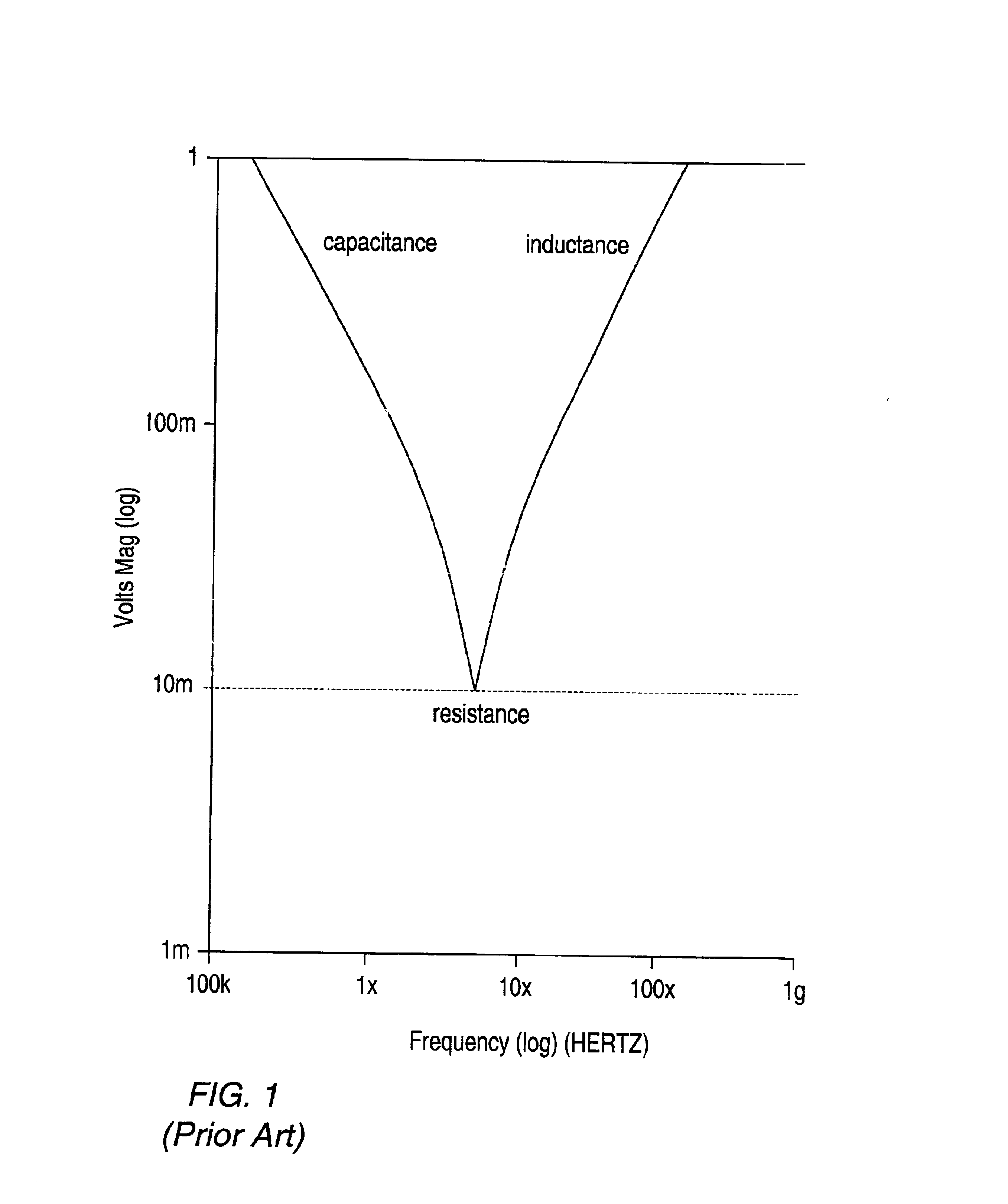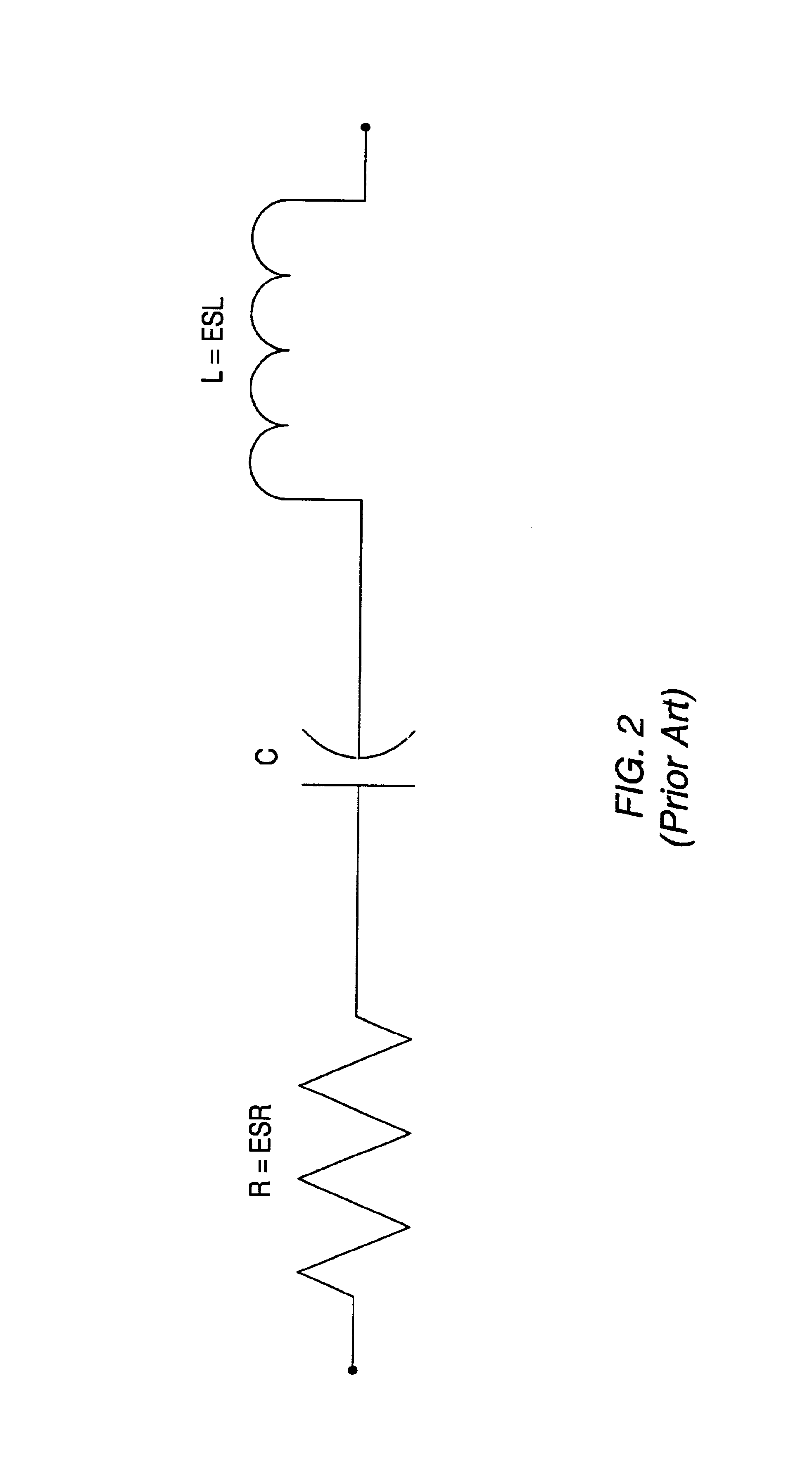System and method for determining the required decoupling capacitors for a power distribution system using an improved capacitor model
a power distribution system and capacitor model technology, applied in adaptive control, process and machine control, instruments, etc., can solve the problems of insufficient high frequency, large target impedance requirements, and inability to design power distribution systems that can deliver a large amount of current at a low voltage, so as to achieve more accurate prediction of anti-resonant peaks and facilitate management.
- Summary
- Abstract
- Description
- Claims
- Application Information
AI Technical Summary
Benefits of technology
Problems solved by technology
Method used
Image
Examples
Embodiment Construction
FIG. 4—Power Distribution System Model
FIG. 4A is a top view of a simplified schematic of one embodiment of a model of a power distribution system for an electronic circuit. As shown, the model comprises a grid 300A of transmission line segments. The segments are grouped into unit cells 350. As shown, there are eight columns labeled “a” through “h”, as well as eight rows labeled, from the bottom to the top, “1” through “8”. The model preferably comprises a SPICE array of transmission lines in a fixed topology (i.e. in an 8×8grid). The transmission lines may be of variable lengths such that the fixed topology may be used on electrical connecting device of any physical dimensions. It is noted that other embodiments of the power distribution system are contemplated, such as an elliptical model based on a “wheel and spoke” geometry. The model may be implemented using circuit simulation software on a computer system. In one embodiment, the model may be a SPICE model, although models using...
PUM
 Login to View More
Login to View More Abstract
Description
Claims
Application Information
 Login to View More
Login to View More - R&D
- Intellectual Property
- Life Sciences
- Materials
- Tech Scout
- Unparalleled Data Quality
- Higher Quality Content
- 60% Fewer Hallucinations
Browse by: Latest US Patents, China's latest patents, Technical Efficacy Thesaurus, Application Domain, Technology Topic, Popular Technical Reports.
© 2025 PatSnap. All rights reserved.Legal|Privacy policy|Modern Slavery Act Transparency Statement|Sitemap|About US| Contact US: help@patsnap.com



